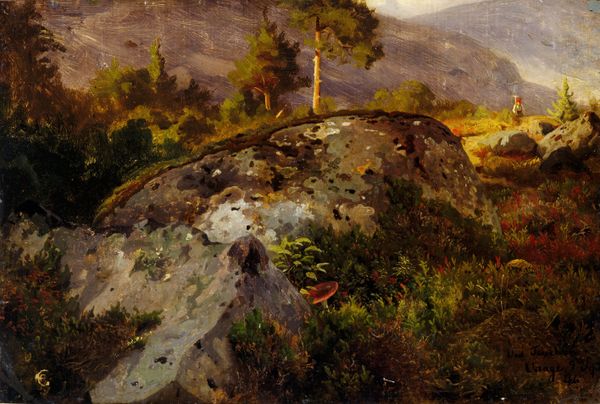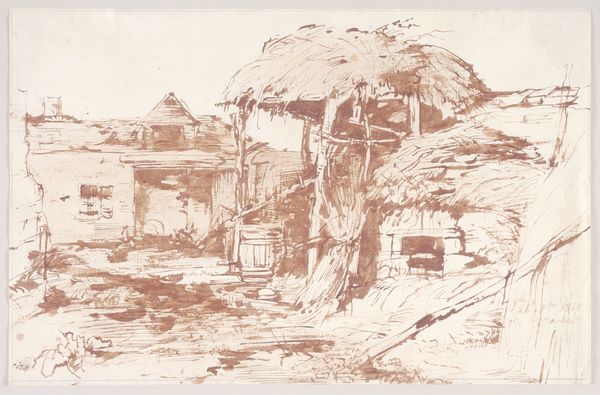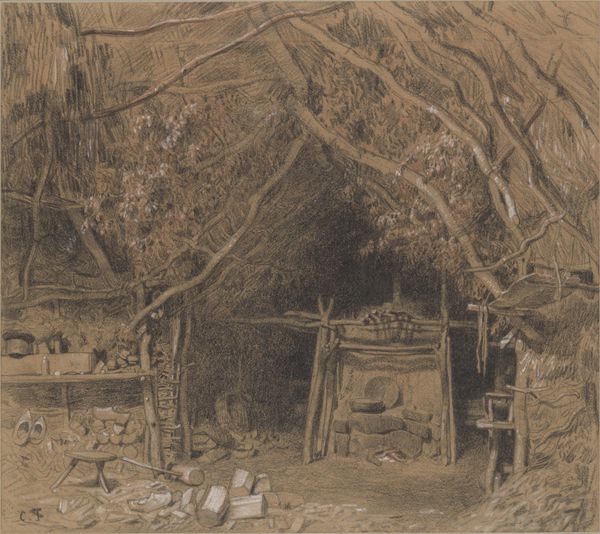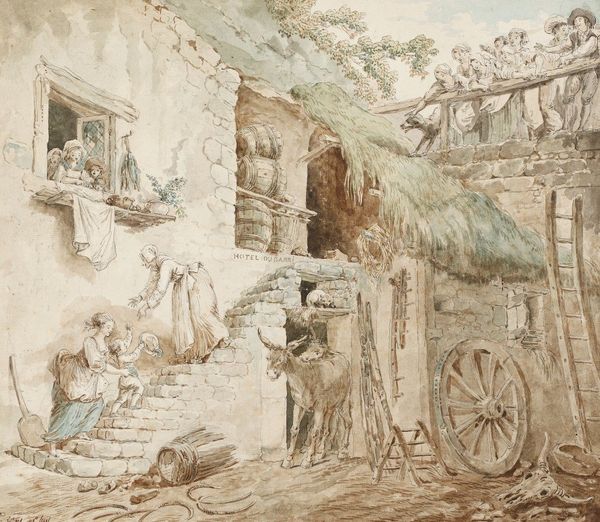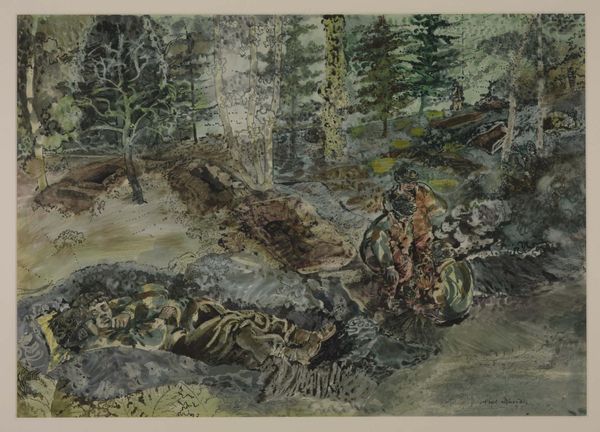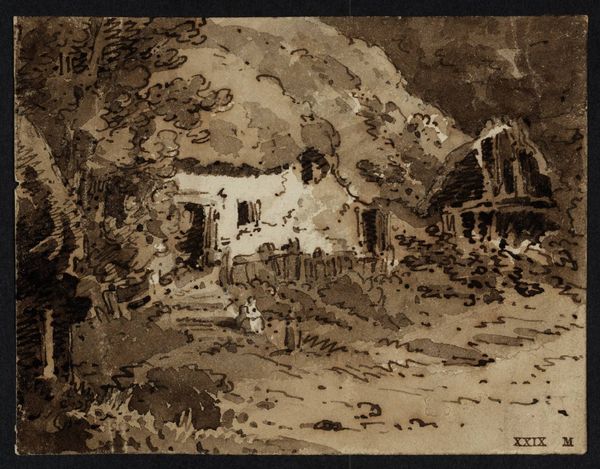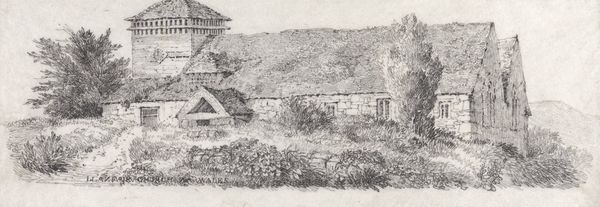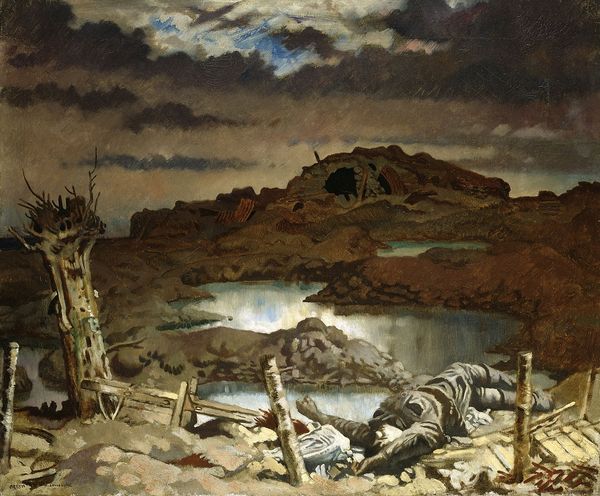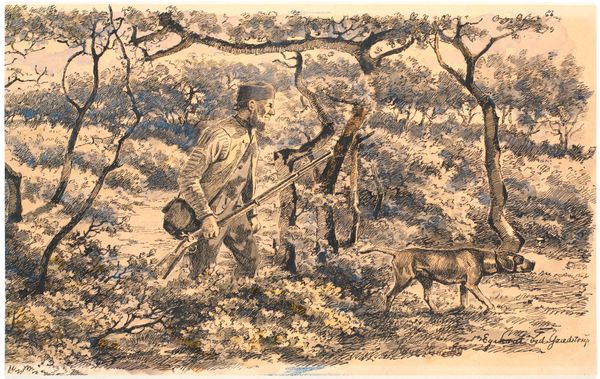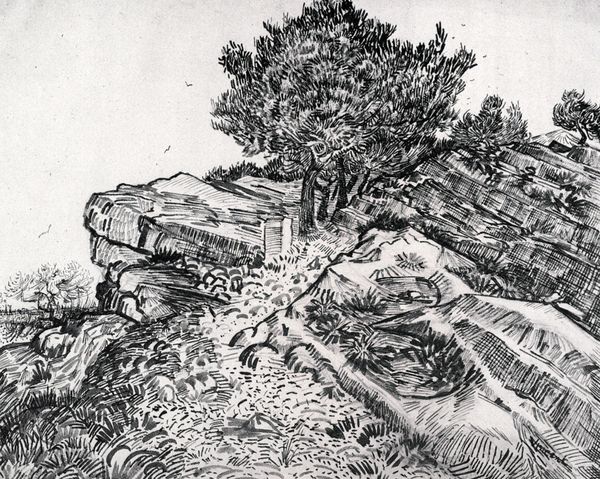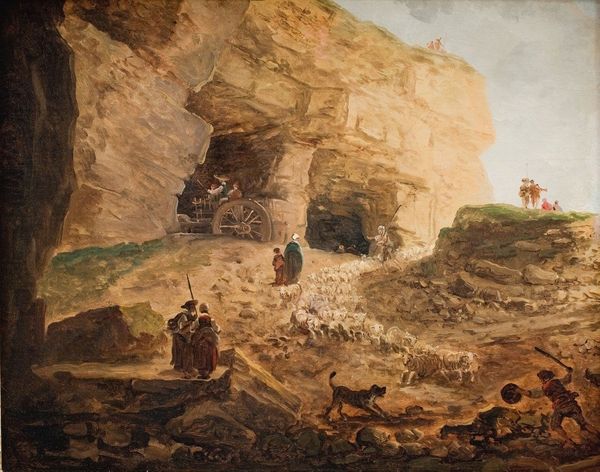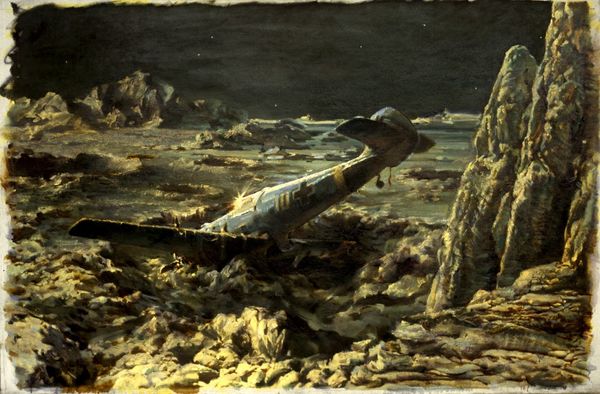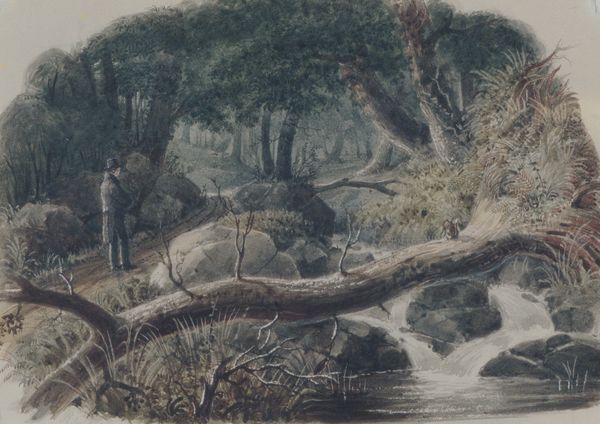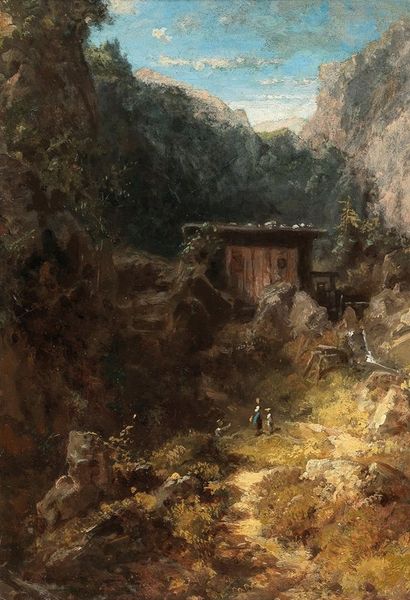
watercolor
#
landscape
#
figuration
#
11_renaissance
#
watercolor
#
italian-renaissance
#
mixed media
#
watercolor
Copyright: Public domain
Albrecht Dürer’s watercolor, ‘Watermill at the montaсa’, transports us to the heart of the Renaissance, a period where the natural world was increasingly seen as a source of both beauty and scientific inquiry. Painted by one of the era's most influential artists, the watercolor presents a seemingly tranquil scene but also reflects the socio-economic shifts of the time. Watermills were crucial for grinding grain, a staple food, and thus played a vital role in the sustenance of communities. There is a man sitting near the mill, perhaps a worker taking respite or the mill owner himself. Note his introspective posture. Is Dürer inviting us to consider the human element within this landscape of labor? The choice to depict such a scene challenges the traditional art of the time, often reserved for religious or aristocratic subjects. Dürer’s watercolor invites a dialogue between the pastoral and the practical, the personal and the political. In doing so, it not only captures a moment in time but also prompts reflection on our relationship with labor, nature, and progress.
Comments
No comments
Be the first to comment and join the conversation on the ultimate creative platform.
